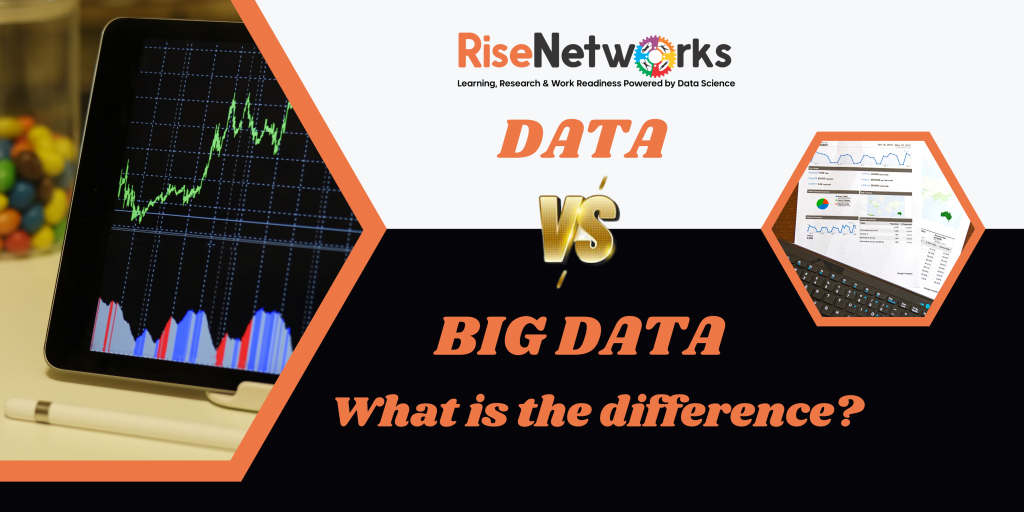Isn’t the difference between big data and data the size or quantity of the data? The short answer is No! Data can be humongous and still be classified as data and not big data. We can easily be drawn into defining big data wrongly just because of the name “big” that it has at its prefix.
Data is a collection of qualitative and quantitative factors that might be structured or unstructured, machine-readable or not, digital or analogue, and personal or not. In the end, it’s a specific set or sets of individual data points that can be merged and abstracted to provide information, knowledge, and direction. Data can be analyzed and crunched using traditional analysis tools and software.
Big data on the other hand must meet certain criteria before it is called Big data and this is simply termed the 6 V’s of Big data.
THE 6 Vs OF BIG DATA
Volume
As it follows from the name, big data is used to refer to enormous amounts of information. We are talking about not gigabytes but terabytes ( 1,099,511,627,776 bytes) and petabytes (1,125,899,906,842,624 bytes) of data.
Velocity
Velocity means that big data should be processed fast, in a stream-like manner because it just keeps coming. For example, a single Jet engine generates more than 10 terabytes of data in 30 minutes of flight time. Now imagine how much data you would have to collect to research one small aero company. Data never stops growing, and every new day you have more information to process than yesterday. This is why working with big data is so complicated.
Variety
Big data is usually not homogeneous. For example, the data of an enterprise consists of its emails, documentation, support tickets, images, photos, transaction records, etc. In order to derive any insights from this data, you need to classify and organize it first.
Value
The meaning that you extract from data using special tools must bring real value by serving a specific goal, be it improving customer experience or increasing sales. For example, data that can be used to analyze consumer behaviour is valuable for your company because you can use the research results to make individualized offers.
Veracity
Veracity describes whether the data can be trusted. The hygiene of data in analytics is important because otherwise, you cannot guarantee the accuracy of your results.
Variability
Variability describes how fast and to what extent data under investigation is changing. This parameter is important because even small deviations in data can affect the results. If the variability is high, you will have to constantly check whether your conclusions are still valid.
Types of big data
Data analysts work with different types of big data:
- Structured. If your data is structured, it means that it is already organized and convenient to work with. An example is data in Excel or SQL databases that are tagged in a standardized format and can be easily sorted, updated, and extracted.
- Unstructured. Unstructured data does not have any pre-defined order. Google search results are an example of what unstructured data can look like: articles, e-books, videos, and images.
- Semi-structured. Semi-structured data has been pre-processed but it doesn’t look like a ‘normal’ SQL database. It can contain some tags, such as data formats. JSON or XML files are examples of semi-structured data. Some tools for data analytics can work with them.
- Quasi-structured. It is something in between unstructured and semi-structured data. An example is a textual content with erratic data formats such as the information about what web pages a user visited and in what order.
Benefits of big data
Big data analytics allows you to look deeper into things.
Very often, important decisions in politics, production, or management are made based on personal opinions or unconfirmed facts. By analyzing data, you get objective insights into how things really are.
For example, big data analytics is now more and more widely used for rating employees for HR purposes. Imagine you want to make one of the managers a vice-president, but don’t know which to choose. Data analytics algorithms can analyze hundreds of parameters, such as when they start and finish their workday, what apps they use during the day, etc., to help you make this decision.
Big data analytics helps you to optimize your resources, perform better risk management, and be data-driven when setting business goals.

